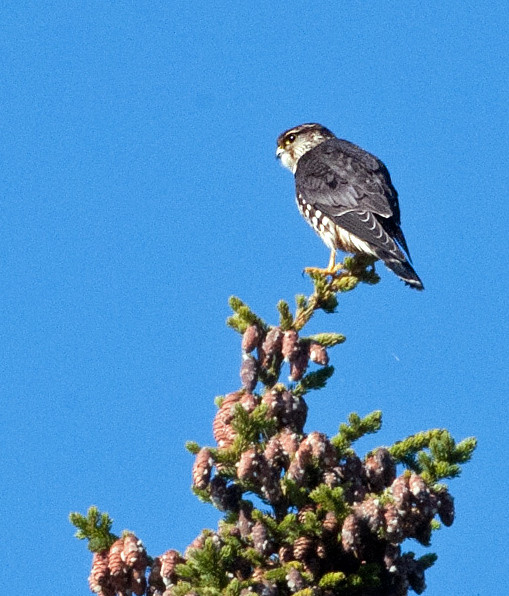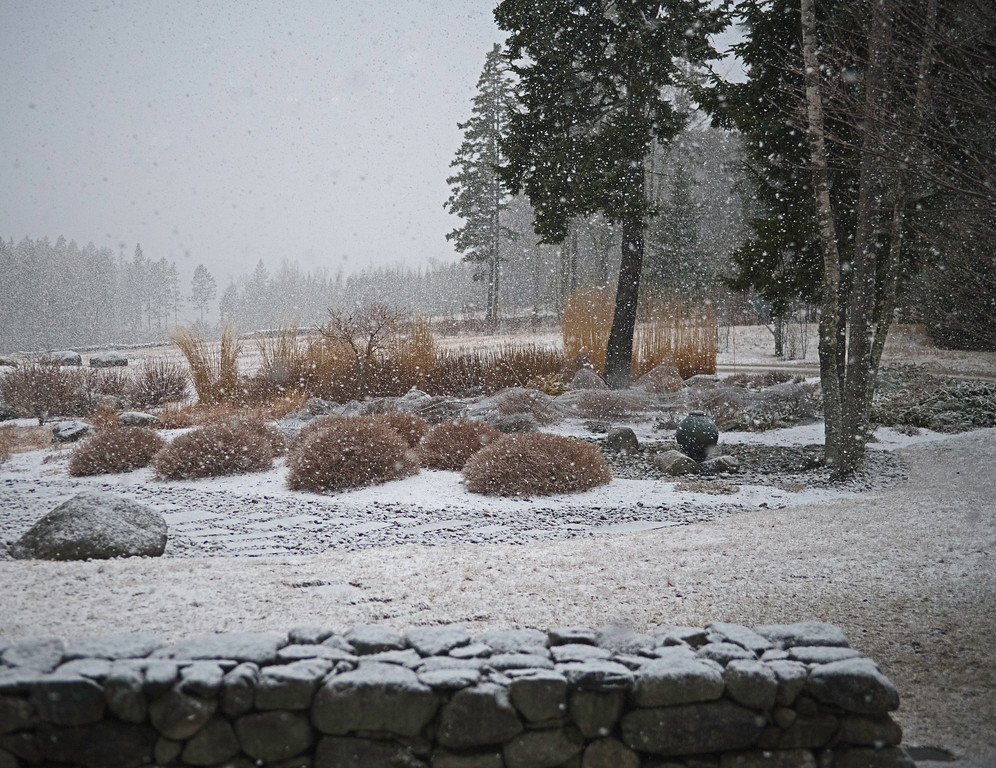For the past week, on and off, we’ve had a Merlin around here that deserves the name of the legendary magician. This bird has the mysterious ability to reveal himself nearby when we’re without a camera and appear out of range when we do have a camera. (The Merlin images shown here are from a prior year.)
Merlins are small and fast falcons that like to prey upon slower and smaller birds and animals. During the Middle Ages in England, these birds were called “Ladies’ Hawks” because they were the favorites of female falconers in the court.
Later, in this country, the birds became known as “Pigeon Hawks,” in recognition of one of their favorite slow foods. Birders didn’t like calling this regal bird by such a limiting and impliedly sinister name, so its name was changed to the more mysterious moniker “Merlin.” That name was derived from the Old Frankish word “Esmerillon,” simply meaning “Falcon.”
(Brooklin, Maine)






























































































